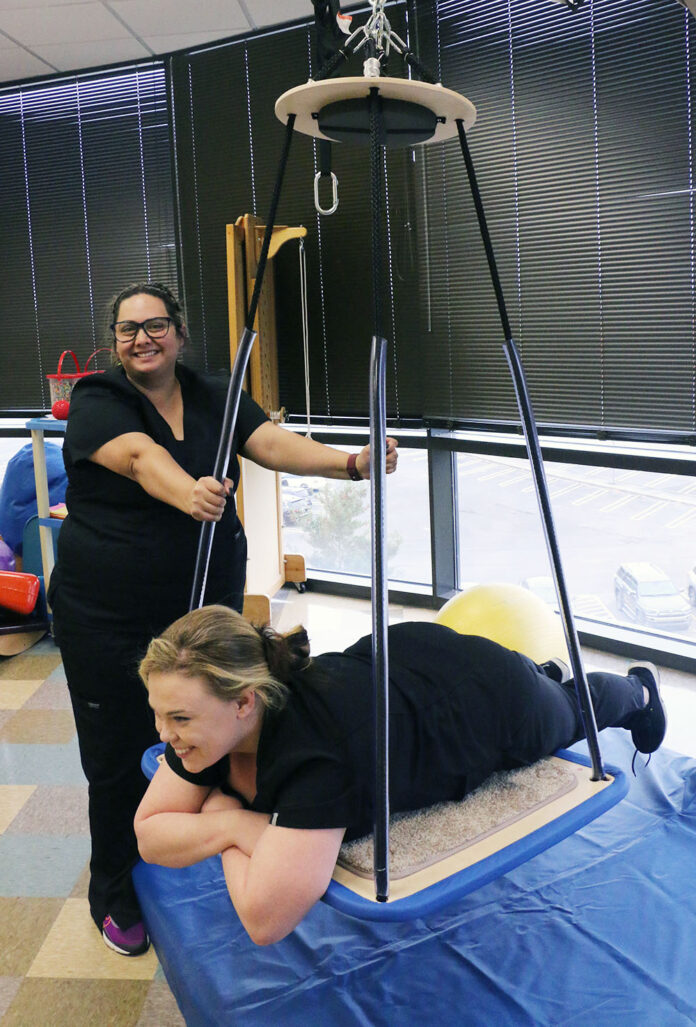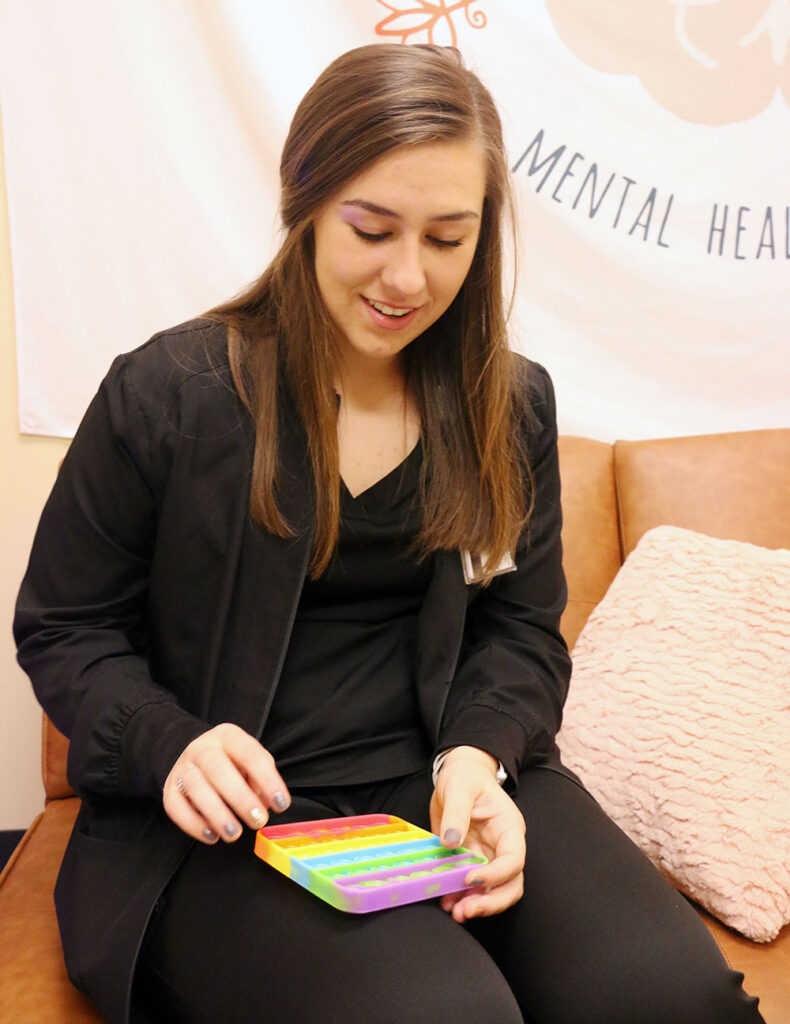
HANCEVILLE, Ala. — The Occupational Therapy Assistant program at Wallace State Community College has been using a sensory room and new pediatric swing to help their students learn how to treat patients and to also provide some stress relief for themselves.
Sensory integration is the philosophy behind both the sensory room and a pediatric swing, said OTA Program Director Laura Smith.
“Sensory integration is a key component of Occupational Therapy,” Smith said. “OT practitioners consider the whole person when evaluating their needs and planning treatment. Sometimes sensory information can be processed incorrectly in both children and adults and can cause a person to either seek more input or avoid more input.”
While most people are aware of the five basic senses, Smith said there are three more that can impact our daily lives: interoception, vestibular input and proprioception. Interoception is the awareness of what is going on inside our body. Vestibular input is our sense of balance. Proprioception is knowing where your body is in space.
A lack of the right balance of sensory input can cause issues with any of their areas of occupation, including basic and higher-level daily living activities (bathing, dressing, grooming, housework, childcare), work, school, play, leisure, social participation, sleep and health, Smith said.
“Think of a child in a school who can’t focus because of the sounds of the bell, the scratching of their neighbor’s pencil, the feel of their tag in their shirt on the back of their neck, the bright fluorescent lights and the smells from the lunchroom are overwhelming,” she said “This child might act out or withdraw simply from receiving so much sensory information and not be able to focus on their school work or play well with their friends.”

The sensory room was created on the OTA floor to provide a space for students to go when they need to relax or calm themselves if stressed out/overstimulated. The room provides calming input to several senses, including soft lighting (vision), soft fabrics/textures and fidgets(touch), ambient noise from the Amazon Echo (auditory) and soothing fragrance (smell).
“The students can experience this sensory input for themselves in this room, but also now can learn the impact of how to use sensory information for calming when working with patients who might be overstimulated and require sensory regulation,” Smith said.
The pediatric swing is a teaching tool to help students continue to learn about sensory integration. Depending on how the swinging occurs, either in a straight line or in a circle, students may receive input about where their body is in space or to right their equilibrium. Swinging can be used both to create calming effects, or to stimulate a child who may be seeking sensory input. The use of a swing can be done in a pediatric clinic or a school setting to help get a student ready to work.
The Wallace State OTA program is currently accepting applications for fall 2022. Applications will be accepted through June 1. For more information, visit www.wallacestate.edu/ota or contact Smith at 256-352-8333 or laura.smith@wallacestate.edu.

















